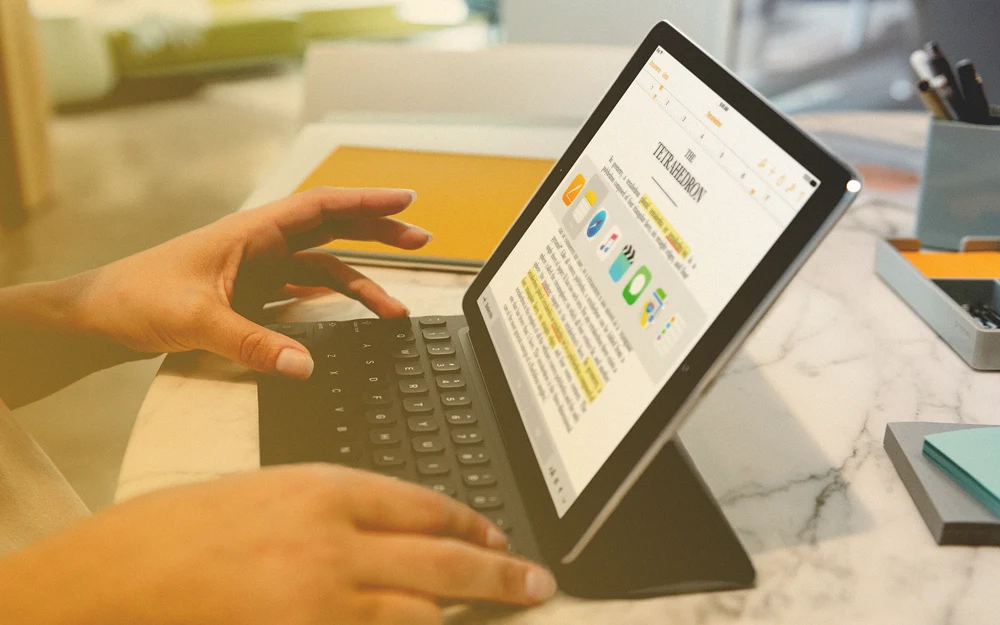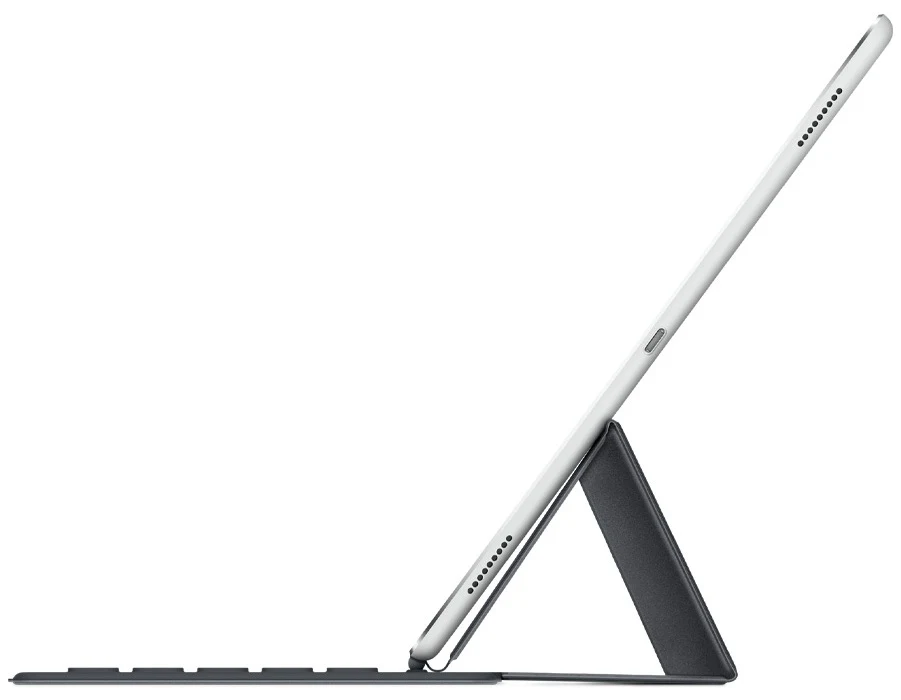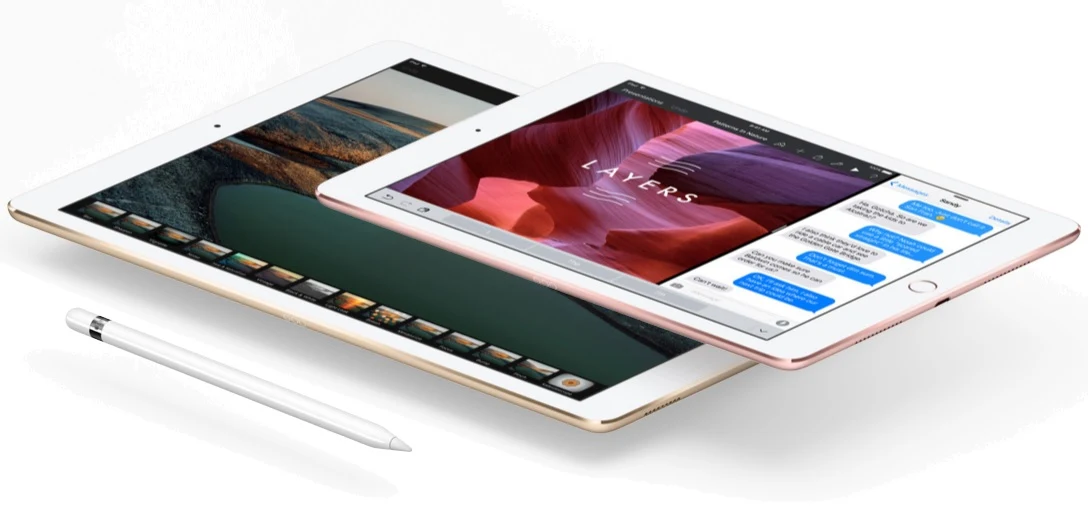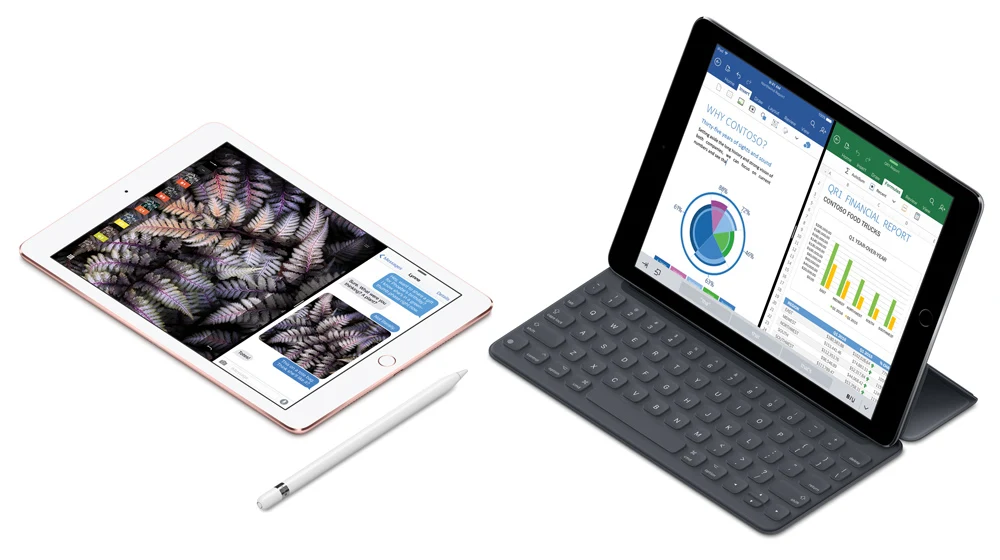Although Apple has never shied from the idea that people could replace their aging laptops with iPads, the company has never made the pitch as directly as Phil Schiller did at Monday’s product launch at Apple headquarters.
While introducing the new 9.7-inch iPad Pro, worldwide marketing head Schiller pointed to the 600 million current Windows desktop and laptop users whose machines are more than five years old. “This is really sad,” he cracked, before pitching the latest iPad Pro as the “ultimate PC replacement.” He also revealed that most users of the current 12.9-inch iPad Pro are coming from a Windows PC.
What Schiller and Apple didn’t so readily acknowledge is that to woo Windows PC users, the iPad must become more like the thing it is trying to replace. With the 9.7-inch iPad Pro, that transformation continues. Here’s how:

The Keyboard Is Key
Like its larger sibling, the 9.7-inch iPad Pro includes a Smart Connector for connecting a keyboard without Bluetooth, and Apple will sell a smaller version of its own Smart Keyboard cover to match the new tablet’s smaller display.
It’s possible to imagine a future in which 3D Touch–a feature available on the iPhone 6s and 6s Plus but not (yet) implemented in any iPad–allows software keyboards to replace hardware ones for serious work. But for now, at least, the ability to turn the iPad Pro into a laptop remains one of its biggest selling points.

People Need Peripherals
One of the more intriguing parts of Apple’s iPad Pro announcement was an expansion of capabilities for the existing Lightning to USB 3 Camera Adapter. Beyond just connecting to cameras, this $39 accessory will also support other peripherals when plugged into a power source. For instance, users can hook up a wired Ethernet adapter, a microphone for recording podcasts, and audio/MIDI interfaces for music creation. While the iPad already has its own accessory ecosystem, the Lightning to USB adapter helps open the platform up to a wider range of peripherals–just like a PC.
On-Device Storage Isn’t Obsolete
Onstage, Schiller knocked Windows PCs for being “conceived of before there was an Internet, before there was social media, before there were app stores.” But despite the cloud-centric nature of modern computing, onboard storage still reigns for serious work. When you’re dealing with ever-larger videos, photos, and apps, you don’t want to be thinking constantly about external hard drive or online services.
So just as it’s rare to see a PC with less than 128GB of storage, the iPad Pro leans toward giving users more space. Beyond the baseline 32GB models, iPad Pro storage shoots up to 128GB, and Apple is now offering 256GB for both the 9.7-inch and 12.9-inch screen sizes.

What Makes An iPad?
All of the new hardware attributes in the iPad Pro add complexity to what was originally a dead-simple device. The same is true of the iPad’s software, which as of iOS 9 includes powerful new split-screen and picture-in-picture capabilities for apps.
These trade offs are arguably necessary as Apple tries to fashion the iPad into more than just an extra-large iPhone. But they also raise the question of where the line should be drawn. Is the iPad Pro now begging for some sort of trackpad, like Microsoft’s Surface tablets? How about a built-in USB-C connection, like Apple’s 12-inch MacBook, or even more storage? And what about a way to install software from outside the App Store? Such additions might seem unthinkable now, but so did USB peripherals, integrated keyboards, and a built-in file browser not too long ago.

Where the iPad once seemed like an exercise in minimalism, perhaps the guiding principle is now flexibility. You start out with a “simple multi-touch piece of glass,” as Apple CEO Tim Cook said last fall, but then you decide which complexities to add, through both hardware and software. The iPad’s touch-first design and App Store creates the baseline experience, upon which users can build what they want.
In a sense, you might call that a personal computer.
Recognize your brand’s excellence by applying to this year’s Brands That Matter Awards before the early-rate deadline, May 3.
